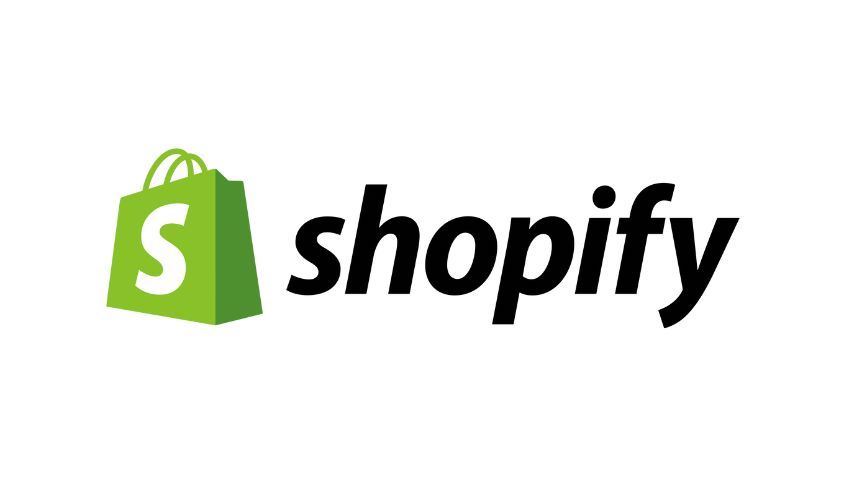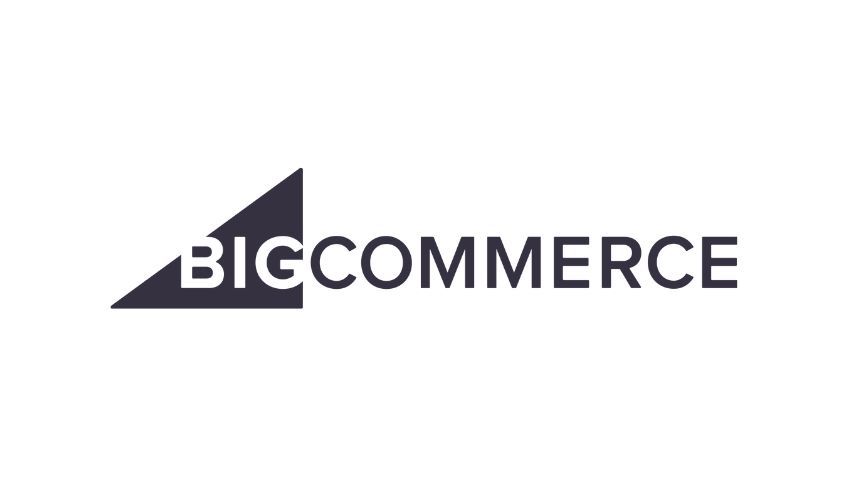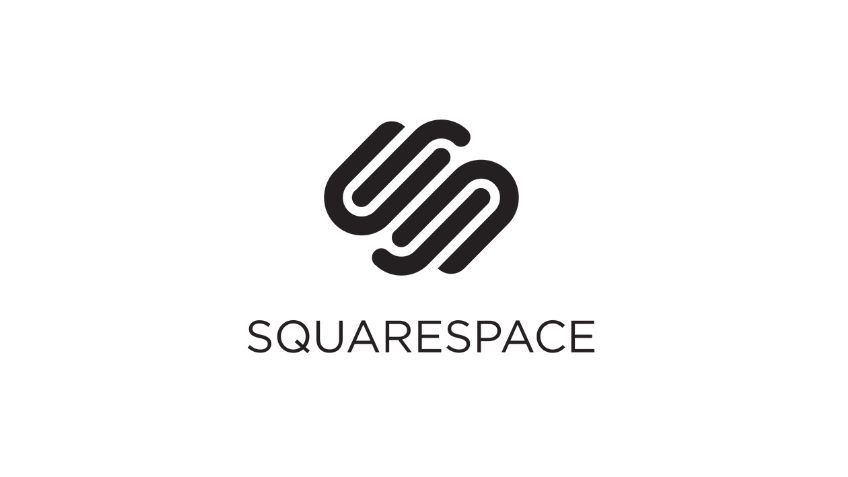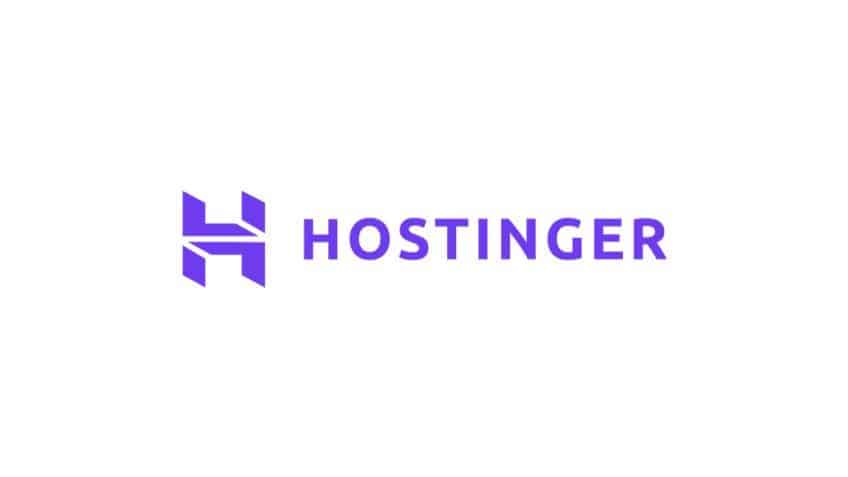We firmly believe that Shopify is the best ecommerce platform for starting a new online store for most people.
We’re not just saying that because they pay us the most–they don’t. It truly is the most comprehensive, infinitely scalable, feature-rich and user-friendly option.
Are there others? Yup. They’re fine for specific situations. But we recommend starting a free trial of Shopify to see how it works before looking into our other recommendations. Personal preference is the main reason folks end up going with something else–not because it’s missing something or incomplete. You won’t know how you feel about it until you try it.
The Best Ecommerce Platforms in 2025
If you’ve given Shopify a fair shot and you didn’t like it for whatever reason, there are plenty of other worthwhile options out there, including:
- BigCommerce – Best for enterprise-level businesses
- Wix – Best for stores with fewer than 50 products
- Squarespace – Best if visuals do the selling
Alternatively, you can use a traditional web host, like Hostinger (our top pick and the most affordable option on this list), Bluehost, or HostGator.
All three have affordable hosting plans that let you install a wide range of ecommerce platforms, like PrestaShop, WordPress + WooCommerce, and Abante Cart. From there, you can build out your store an start selling. They all also have drag-and-drop website builders with ecommerce functionality.
Shopify – The Best Ecommerce Platform Overall

Shopify is one of the most popular choices for setting up an online store. It’s beginner-friendly yet capable of handling big-time sales.
Complete online stores start at $29 per month and come with all the ecommerce necessities packaged in a sleek platform. You’ll be able to manage inventory, shipping, marketing, and online payments from the same dashboard. You really won’t need many other tools as Shopify does everything you need (and then some).
It’s extremely easy to use, despite being a very powerful platform. We spoke with several Shopify users and all of them complimented its ease of use, especially for first-timers.
One user without any technical experience who “hates computers” was able to get her site online in a single weekend “just kind of trying different things.”
Another user who worked for a nationwide boutique furniture retailer described how the platform teaches users to find success. He’d never used a platform so welcoming and helpful previously. “Shopify helps you set up everything,” he said. “It doesn’t do things for you, but it makes you aware of things you need to do.” That was the key thing for him. He described the types of helpful notifications he received: “Hey, you probably need to check about taxes. Hey, you probably want inventory alerts.”
The platform automatically detected issues and blind spots that would have been costly to discover in the future. “As a first-time store operator, it can be really beneficial,” he said.
These are just two of the Shopify users we spoke with, but their experiences capture the breadth of who can start using this platform right away. Everyone from total rookies to more mature businesses that want to jump into the ecommerce space can do great things with Shopify.
Aside from ease of use, you’ll appreciate:
- Over 8,000 apps and plugins: This is the largest ecommerce app store by a long shot. BigCommerce, its closest competitor on our list, offers around 1,000 apps. Shopify users receive a greater variety of developed tools to connect on social media, merchandise products, fulfill orders, and report on sales. The best part? Thousands of the apps are free.
- Easy to scale: Shopify supports multiple staff user accounts, currencies, and inventory locations with its entry-level plans. The bulk editing feature for inventory management makes it particularly easy to tag, track, and update large numbers of items in a small amount of time.
- Deep knowledge base: Shopify’s online resources were a huge help to the users we talked with. Even though Shopify offers 24/7 customer support, one user said, “I think they do a really good job of giving you enough information that you don’t need to contact them.”
- Social selling: You can start with Shopify’s intuitive core platform and take it in whatever direction is most valuable to you. You can sell directly on Walmart, eBay, Pinterest, Facebook, and more.
- Free business tools: Beyond the ecommerce wins, Shopify also comes with free resources to start and grow your business. So if you’re starting from scratch, you can take advantage of Shopify’s business name generator, logo maker, slogan maker, QR code generator, and more. They even have free templates for purchase orders, privacy policies, and refunds.
Most things about Shopify are great. However, there are a few potential drawbacks to be aware of. First and foremost, there are only 11 free themes to choose from. You can customize them but you don’t get unlimited design control.
And you may have to purchase a theme to create the look you want. That paired with the cost of premium plugins you may need can raise the price of getting started.
Check out our guide on how Shopify works if you want to learn more about it.
BigCommerce – Best for Enterprise-Level Businesses

We recommend BigCommerce for enterprise-level businesses with a large inventory of products. It keeps management simple regardless of how many SKUs, variants, warehouses, locations, and channels you have.
On the front end, your customers have no problems finding exactly what they need. Where other ecommerce platforms struggle at scale, BigCommerce excels. It truly is built to simplify ecommerce management processes for larger stores.
Compared to other platforms, BigCommerce excels at:
- Complex inventory management: BigCommerce allows up to 600 variants tied to a single SKU. Not everyone needs this level of variety, but products that offer a wide range of colors, finishes, sizes, and so on are easy for customers to shop.
- Channel management: You can easily keep track of customers and earnings, as well as adjust the settings of any channels you use. Facebook, Instagram, Walmart, Amazon, eBay, Wish, MercadoLibre, and TikTok channels are supported by the platform–others are available via third parties in the BigCommerce App Store.
- B2B and wholesale capabilities: BigCommerce makes it easy for larger operations to streamline both B2B and wholesale purchasing experiences. You can create custom price lists down to each individual SKU for every wholesale client and quickly assign lists to groups or specific accounts. There are also quote generation features and simple re-ordering options for B2B clients.
- International sales: BigCommerce offers everything you could possibly need to scale your ecommerce operation across international borders. It works really well for multi-site management, where you have different options for stores in different regions. You can accept payments in over 100 currencies and benefit from localized product catalogs and pricing options.
The users we spoke with were especially happy that BigCommerce let them carry a ton of products and display them well for customers.
On the back end, they could make listings as detailed as they wanted, and on the front end, they could offer customers more control to find exactly what they were searching for.
In some of the other platforms, like Shopify, you can only offer a few drop-down menus (do you want small, medium, or large), whereas drop-downs are just one of many options BigCommerce users can employ to increase their customers’ options–you can set up radio buttons, text fields, a selection of swatches, checkbox options, and more.
Users were also happy with how much of this functionality was built right into the platform. “We created discount codes, volume pricing, bulk pricing, and all of that directly in BigCommerce,” one user told us.
Customer ratings and reviews are also part of the BigCommerce platform, and there are more than 70 types of built-in discounts and coupons. Shopify users have to install multiple third-party apps to support customer reviews or run a similar diversity of promotions.
There’s also no need to use a plugin to get really targeted with promotions. “For example, if we were selling to the public, but also wanted to target school teachers, we were able to create specific accounts for school teachers that would give them special access to a certain catalog and have unique pricing for them,” another user noted.
Contrast this with using a lighter platform where you’ll wind up having to find workarounds or using third-party apps to get things just right.
Plugins are ok, but can often throw a wrench in your reporting. Out of the box, BigCommerce is just better set up to handle larger, more complex inventories.
However, BigCommerce is great for growing bigger–not fancier. You’re definitely able to scale up, but that doesn’t mean adding additional features. On top of that, it’s not nearly as customizable look-wise as other platforms we’ve looked it.
There are quality ecommerce themes, but you may have to hire a developer to escape the templated, box-store feel.
BigCommerce pricing starts at $29.99 per month if you make less than $50k in sales per year. If you’ve already surpassed that, you’ll have to start at (or upgrade to) a higher tier.
Wix – Best for Stores with Fewer Than 50 Products

Wix is an excellent option for stores that are never going to have a large inventory.
Wix technically does allow you unlimited items, but the reality is that its most successful Wix sellers have a simple product line that’s easy enough to manage without advanced tools.
There are over 100 free ecommerce templates you can use to get started (more than any other platform on the list combined). Plus, Wix’s true drag-and-drop website builder makes it easy to customize your store as much–or as little–as you’d like.
“With Wix, it was definitely super easy to just move things around,” said a recording artist who sold merch on her site. “It wasn’t super difficult to navigate edits,” she said, which was important because she liked to run limited edition product sales of things like t-shirts and CDs. Editing the site was as easy as updating inventory.
We spoke with a web developer who’d used both Wix and BigCommerce. He thought Wix was “fantastic” from a design perspective, and perfect for small businesses without super complex or expansive inventory.
“[Businesses like that] need something that looks professional and is easy to evolve as they change,” he said. With Wix, you can build the site you want and “there’s not a lot of heavy lifting and expense.”
While it’s not as comprehensive as Shopify, you’ll enjoy:
- Quick setup for new users: Every platform we recommended is easy to use, but Wix is in a league of its own. It has literally hundreds of industry-specific templates to get started and extensive in-platform guidance. The lack of complexity on the backend won’t matter to people without an extensive product selection, and makes day one that much simpler.
- Truly free-form design: You can drag and drop page elements anywhere on the page. There are guiding lines set up in the Wix templates, which make it easy for people to create an intuitive layout on the page. Unlike Squarespace, however, Wix lets you ignore those lines.
- Easy to edit: Users loved the ability to change up the look of their site and add new content, pages, or interactive elements. With other platforms, most noticeably BigCommerce, it was harder for users to adjust their site as the market evolved.
- Exceptional security: When it comes to online transactions, both merchants and customers want to know their financial information is protected. Wix delivers that reassurance automatically, no extra steps required.
You can also track orders on the platform, print shipping labels, or use one of Wix’s partner shipping services to handle your deliveries.
The biggest downside of Wix is that it’s not built to scale. It’ a great choice for small stores, but once you start to carry a ton of inventory, it becomes unwieldy very quickly. Fewer supported currencies, inventory locations, shipping options, and payment gateways start to become real issues at scale.
Wix offers unlimited items, six product options, and up to a thousand variants per product. So on paper, it looks like you can go really big, but the users we talked to disagreed. This is exactly why we wanted to talk to real users with actual experience selling on the platform.
There are also far fewer plugins than others and some of the users we talked to said that the price is hard to predict. It not always clear what’s an upsell, what’s included, and what you are only allowed to try as a trial.
Wix’s ecommerce plans start at $27 per month, just two dollars less than Shopify.
Check out our tutorial on how to make a Wix website to learn more about how it works.
Squarespace – Best if Visuals Do the Selling

Squarespace is our top recommendation for users that need an online store with more style and substance than the typical commercial, cookie-cutter ecommerce destination.
You’ll be able to offer customers a more on-brand, unique experience with visuals front and center.
“It feels presentable in a way that I’m comfortable with being the face of our brand,” said one shop owner who sold house plants within her home state. Like the other Squarespace users we talked to, she felt like it was easy to design and maintain a site that spoke to her clientele.
Compared to other platforms, not having to manage custom themes or plugins is a real time-saver and protects your site automatically from potential security vulnerabilities. An artist who uses Squarespace as a portfolio and space to sell artwork noted ,“I knew that everything would always be up to date,” adding how much they enjoyed not having to think about it.
Whether you’re an artist, interior designer, musician, or other creative professional, you’ll be able to put together beautiful designs right out of the box without any coding or having to hire a developer to help you out.
The same can’t be said of most of the other ecommerce platforms out there–they ultimately end up feeling like a shopping site, rather than the home of a creative brand.
Some of the biggest pros of Squarespace include:
- Customization without complexity: Users loved the design interface for creating their site. With Squarespace, you can switch up the template without starting over, which you can’t do with Wix.
- Low maintenance: If you use a free Squarespace theme, it’s automatically updated (unlike with WordPress). There are also some key features built into Squarespace, like email marketing and analytics, that require plugins or apps in other platforms.
- No storage limits: The other website builders, like Wix and WordPress, have storage and database limits. Squarespace does not, so you never have to worry about how many high-quality images and videos you upload.
- Stunning designs: Starting with a template isn’t necessarily unique in the ecommerce space. But Squarespace’s designs definitely stand out from competitors. They’re sleek, modern, and overall aesthetically pleasing.
- Portfolio display: If you’re a creative professional, you can easily use Squarespace to showcase your portfolio and sell your work. From paintings to pottery and handmade art, it feels like Squarespace was built specifically for this use case.
Despite Squarespace’s full suite of stunning templates, you don’t get total control over how your website looks. Most users were happy with the final result, but you lack complete design freedom.
Advanced users can make changes in the code, but even that is harder than with other platforms.
With Wix, you can move page elements wherever you want on the page. You can’t quite do that in Squarespace. As one user with experience in both platforms said, “with the layout of Squarespace, it’s way more structured. It’s like things are where they are, and that’s where they go. You have to just kind of work within that.”
It’s also more challenging to scale as you add more products and variants. It’s really not built for that.
The users we talked to said they felt confident Squarespace would work for a few hundred items, but a store with thousands of SKUs is going to run into issues.
“If you’re shipping out of a warehouse, Squarespace isn’t for you,” said one user. We think this is helpful for visualizing the limits, but it’s also literally true–you can’t track inventory in multiple locations, whereas with Shopify, it’s included in every plan.
The cheapest Squarespace ecommerce plan starts at $23 per month.
Traditional Hosting Options–Hostinger Is Our Top Pick

If the main purpose of your website isn’t ecommerce or you already know you want to use WordPress + WooCommerce to build your store, going with a traditional web host may be a good choice. It’s significantly cheaper than all of the options we’ve looked at so far–the tradeoff is that it’s a lot harder to get started.
We don’t recommend this unless you know your way around web hosting or are willing to put in a lot of time conquering the learning curve.
Hostinger is our favorite hosting provider because it’s one of the cheapest, has the best user interface, and comes with everything you need to create a website. Everything from choosing a content management system, installing it, connecting your domain name, and installing an SSL certificate to creating email accounts is relatively easy to do.
However, traditional shared hosting plans like this don’t come with ecommerce functionality out of the box. The same is true for Bluehost and HostGator (two other hosting options).
With that said, all three providers have a drag-and-drop website builder you can use instead of a platform like WordPress or PrestaShop.
Depending on the provider and plan you choose, they may have some ecommerce functionality, but it’ll feel incredibly limited compared to something like Shopify or BigCommerce. You likely won’t find advanced inventory management, built-in payment gateways, or advanced features like discounts, shipping partners, or support for multiple inventory locations.
It’s still possible to get all of those things, you’ll just have to get them separately and integrate them into your store.
Check out our WordPress ecommerce guide to learn more about the process of selling with WordPress.
Our Ecommerce Platform Selection and Review Process
Our research team looked at more than 20 different ecommerce platforms before we narrowed down our options to the top five reviewed in this guide. Every tool went through a thorough vetting process to ensure it met the criteria we established for quality and performance.
Here’s a closer look at how we landed on the recommendations mentioned in this guide.
How We Chose the Brands We Included
In order to make our top list, each platform had to include all the fundamentals of a modern online shopping experience:
- Visual website builder: Create your online store with clicks (not code)
- Inventory management tools: Stock, tag, and categorize an unlimited number of items
- Shopping carts: Allow customers to browse and order products
- Payment gateways: Offer secure ways for customers to pay online
- Shipping tools: Arrange for pickup, delivery, or price in a third-party shipper
- SEO & marketing tools: Get the word out and more traffic to your store
Our researchers focused on platforms that individuals could start using right away, without deep experience in computer languages, supply chain management, or online marketing.
On day one, someone should be able to set up their store, stock their products, market their brand, and ship orders. None of these fundamentals should require a developer or a computer science degree.
This is why we ended up excluding some great products like Magento. Those products are marketed toward larger operations with complex requirements. For the vast majority of users, a tool in this class has more firepower than they need, and it’s going to be way more challenging to set up.
You can definitely do millions in revenue with the recommendations on our list. Many businesses already have.
Once we felt confident that our top list was suited to individuals and small businesses, it was time to take a deeper look at what it’s really like to run a store on each of these platforms.
How We Reviewed the Top Ecommerce Platforms
The only way to find out how well these tools perform in the real world is to speak with active users. These are shop owners and web developers who have entrusted their businesses to these platforms.
Demoing a product for two weeks is fun, and it can be illuminating. However, nothing trumps the experience of someone who is depending on the platform for their income year after year. To find active users, we looked at public review sites and social media, confirming user identifies and experience via LinkedIn.
From there, we coordinated 12 interviews with a diverse range of folks using at least one product on our list.
Interviews ranged from around 15 minutes to as long as 45 minutes. Some of the longer interviews were with developers who had tried every tool on the market and built high-powered sites on multiple platforms.
But we also had good long talks with rookies who were finding success without any professional guidance. They were proud of their ability to find their own solutions online. As one first-timer explained, “I am a true millennial in the way that I will do anything to find the answer in writing rather than having to call someone.”
What We Learned Reviewing the Best Ecommerce Platforms
One thing that surprised us about the people we talked to was that we didn’t hear “x is so much better than y.” Instead, we heard “x worked well for certain things, but when I started doing other things, y was definitely the way to go.” This is similar to what we heard from web developers who had experience in multiple platforms as well.
So what are the major factors to consider? How should you frame your search?
In the guidance that follows, we’ve distilled everything we learned about ecommerce platforms. Three weeks of interviews, hundreds of collective years of ecommerce experience, and thousands of lessons learned are boiled down into four key considerations.
Size (Of Your Store) Matters
The amount of software support and functionality you need is directly proportional to how big, complex, and varied your online store is–or will be. A solo creator who’s tired of paying table stakes for Etsy is in a very different position than a company with staff needing to oversee an online store that’s open 24/7.
A mismatch here can lead to a lot of headaches. Trying to do more than your platform is designed for is a recipe for frustration and an eventual switch, while trying to use an immense platform for a basic online trade show booth will feel like trying to drink from a fire hose.
Accuracy and simplicity also factor in here. A relatively basic store that’s accurate and up-to-date is going to be better than a dazzling one with mistakes.
If pricing is no longer correct, or you’re listing products for sale that are actually out of stock, customers are going to hate shopping on your site.
Be realistic about the time you can give your store, too. The more plugins you add and products you list, the more work you’re going to have to do to stay on top of it.
Compete For YOUR Market, Not THE Market
Everyone we talked to tied their store into social media feeds and online marketplaces. This was the lifeblood of their digital stores’ traffic. It created brand new streams of revenue for brick-and-mortars. “They were selling only in their store,” one developer said about a beauty shop, “giving them a very easy-to-use ecommerce site literally just open[ed] worlds up.”
Once the word about their products was online, it spread, and now they have their own niche market of shoppers from across the country.
“I have a presence on Instagram, Twitter, Facebook, TikTok, all those spots,” a recording artist told us. Squarespace makes it as easy as possible for her to gain followers, subscribers, and eventually paying customers.
The platforms we’ve recommended let you connect to all the big social channels, and are constantly adding newer, trendier social media options. However, what you can do on each social media channel differs greatly from one ecommerce platform to the next.
If social is crucial to your business, pay very close attention to the integrations, plugins, and apps available.
Get current information and read the reviews in the app store–these are a goldmine for assessing the quality of the plugin or app.
Lock Your Shipping Strategy Down Early
We heard a lot about shipping issues from people, especially if they had large, heavy, or living items, like plants. They didn’t always know who to blame–the shipper, the platform, themselves–but the more you can figure out about what shipping setup works for you ahead of time, the better.
You may be able to use the built-in shipping features included with the platform, especially if you’re shipping conventional items, and you feel confident enough in your prices to charge default rates.
Bear in mind that entry-level plans don’t always include tools to handle more than basic shipping.
And if you need to ship large, heavy, or otherwise unconventional items where you need more flexible shipping rates, you are almost certainly going to have to use a plugin or extension.
We even spoke with one Shopify user who handled a lot of their own furniture deliveries because they needed a white-glove, concierge delivery.
“I mean, some of these orders are half a million dollars of stuff,” he said. “But we did offer shipping for a lot of products because if people can’t put in their credit card, and complete the order right then, they won’t buy it. They’re going to go to Amazon or somewhere else.”
Plan Ahead For Scalability
We spoke with several ecommerce owners who switched from one platform to another at one point during their journey. And one thing was clear in each of these scenarios—migrating your ecommerce store isn’t fun.
Everyone we talked to who had done it… recommended avoiding a switch if at all possible.
So, it’s important to choose the right platform before investing any serious amount of time into it. Free trials, looking at example sites, and browsing themes will help give you a good idea of what you can and can’t do–look and style wise–with the platform.
But you also need to consider scalability.
Assessing your future plans while you’re deciding between different options can help avoid a messy migration in the future. Just because you don’t need a specific feature or capability today, it doesn’t mean you won’t need that in next year or the following year.
While it’s impossible to predict the course of your operation, you can still have a rough idea of where you’re heading.
Can your ecommerce platform handle it when you go from 25 products to 250 products? What happens if you go from $5,000 per month to $50,000 per month?
Right now, your core customer base may only be located in a specific state or region. But what happens when you start selling across state lines? What about international borders?
Features like automated tax calculations and compliance tools will be crucial for this type of expansion.
Some of you may ultimately decide to open physical storefronts in addition to your online store. In this case, you’ll need an ecommerce platform that can sync your inventory across both. Having an integrated POS software that supports both in-person and online selling is also extremely useful.
You definitely don’t need to sign up for the highest-tier or enterprise-level solution today. But it’s in your best interest to assess what’s being offered by the platform you’re considering. This will give you a much better idea of whether or not it can support your future growth without having to move your store elsewhere in a few years.
